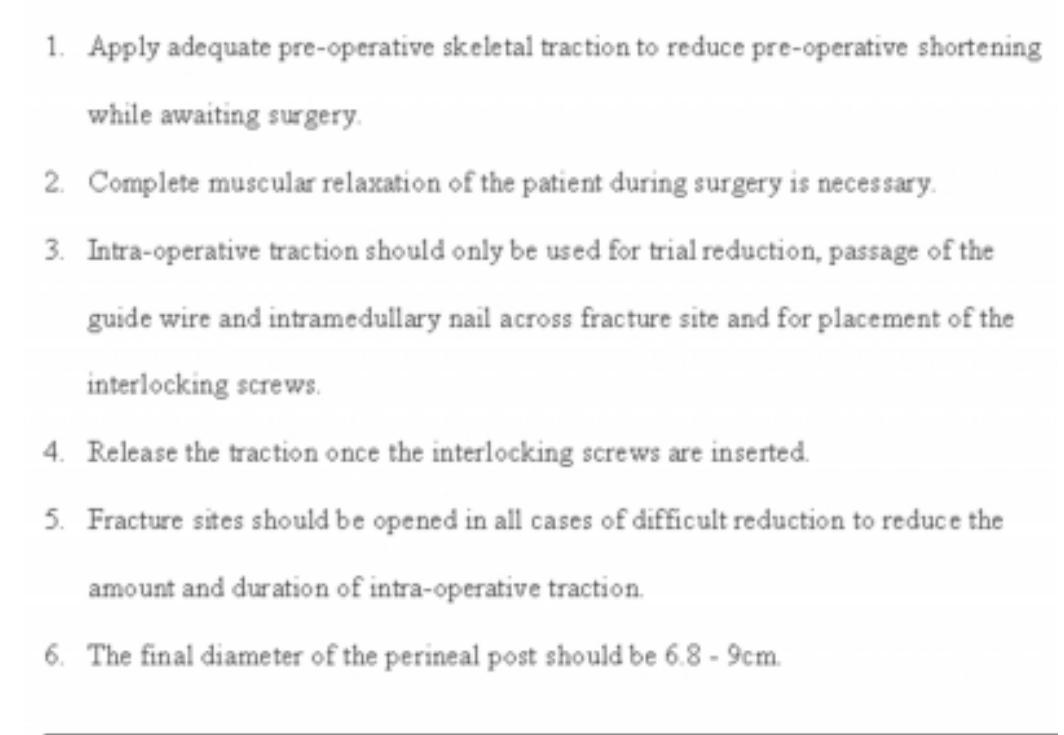Pudendal Nerve Palsy Following Static Intramedullary Nailing of the Femur (original) (raw)
Abstract
Objective: To determine the incidence of pudendal nerve palsies following static interlocking nailing of the femur, and to relate its development to age, body mass index, amount of pre-operative shortening, timing of surgery, level and type of fracture, duration of intra-operative traction, and use of muscle relaxants during surgery. Method: Twenty-nine consecutive patients who were treated with intramedullary nailing for femoral shaft fractures were prospectively studied. The age, body mass index, level and type of fracture, pre-operative traction, timing of surgery, preoperative shortening, duration of intra-operative traction, and use of muscle relaxants were recorded. Post-operatively, each patient was examined for altered sensation in the perineum. Men were asked about erectile function. Results: Eight patients (27.6%) developed palsies. All patients regained normal sensation and function. No significant differences were found between pudendal nerve injury and age, body mass index, pre-operative shortening, timing of surgery, level of fracture, muscle relaxant use, and duration of intra-operative traction. Significantly more palsies were present in patients with comminuted fractures. Conclusion: Intramedullary nailing of the femur is associated with pudendal nerve palsy. There is a significant correlation between pudendal nerve palsy and comminuted fractures.
Figures (1)
CORRESPONDENCE TO Table 1: Guidelines for Minimizing the Risk of Pudendal Nerve Palsy Dr REC Rose, Division of Orthopaedics, Department of

Loading Preview
Sorry, preview is currently unavailable. You can download the paper by clicking the button above.
